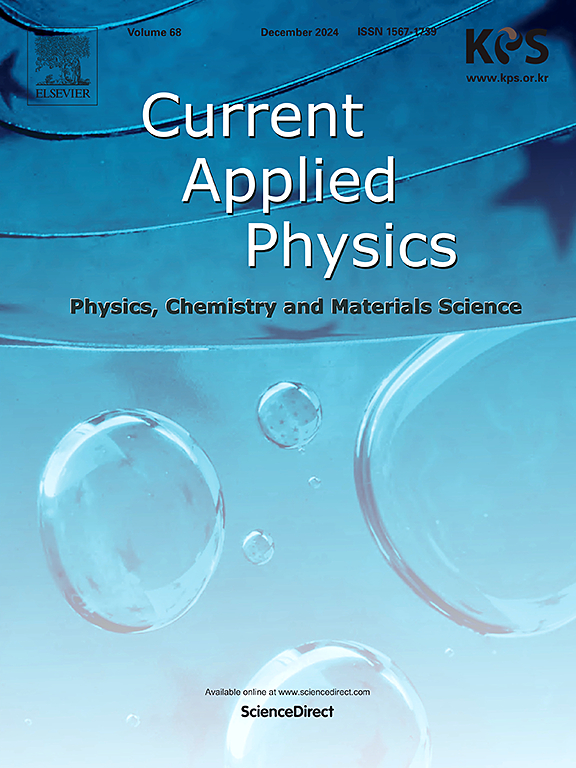Impact of lithium fluoride buffer layer on contact interface engineering in a–IGZO TFTs
IF 3.1
4区 物理与天体物理
Q3 MATERIALS SCIENCE, MULTIDISCIPLINARY
引用次数: 0
Abstract
This study investigates the impact of the lithium fluoride (LiF) buffer layer on the electrical properties and reliability of amorphous indium gallium zinc oxide (a–IGZO) thin-film transistors. Ultraviolet photoelectron and ultraviolet–visible spectroscopy analyzed changes in the effective work function and Schottky barrier height. Electrical measurements show that the 1 nm LiF layer reduces contact resistance and improves carrier injection, while thicker layers (>2 nm) degrade performance by reducing tunneling probability. Reliability tests, including negative bias stress (NBS), positive bias stress (PBS), negative bias illumination stress (NBIS), and positive bias temperature stress (PBTS), demonstrated improved threshold voltage stability due to fluorine passivation of oxygen vacancies, attributed to fluorine from the LiF layer during thermal processing. X-ray photoelectron spectroscopy confirmed this chemical modification. The 1 nm LiF layer reduced contact resistance by over 30 %, increased mobility to 12.28 cm2/V·s, and significantly suppressed NBIS-induced threshold voltage shifts from −9.4 V to −2 V.

氟化锂缓冲层对a-IGZO TFTs接触界面工程的影响
本文研究了氟化锂(liff)缓冲层对非晶铟镓锌氧化物(a-IGZO)薄膜晶体管电学性能和可靠性的影响。紫外光电子和紫外可见光谱分析了有效功函数和肖特基势垒高度的变化。电学测量表明,1nm的LiF层降低了接触电阻,提高了载流子注入,而较厚的LiF层(2nm)降低了隧穿概率,降低了性能。可靠性测试,包括负偏置应力(NBS)、正偏置应力(PBS)、负偏置照明应力(NBIS)和正偏置温度应力(PBTS),表明由于氧空位的氟钝化,阈值电压稳定性得到改善,这是由于热处理过程中LiF层中的氟。x射线光电子能谱证实了这种化学修饰。1 nm的LiF层降低了30%以上的接触电阻,将迁移率提高到12.28 cm2/V·s,并显著抑制了nbis诱导的阈值电压从−9.4 V到−2 V的变化。
本文章由计算机程序翻译,如有差异,请以英文原文为准。
求助全文
约1分钟内获得全文
求助全文
来源期刊

Current Applied Physics
物理-材料科学:综合
CiteScore
4.80
自引率
0.00%
发文量
213
审稿时长
33 days
期刊介绍:
Current Applied Physics (Curr. Appl. Phys.) is a monthly published international journal covering all the fields of applied science investigating the physics of the advanced materials for future applications.
Other areas covered: Experimental and theoretical aspects of advanced materials and devices dealing with synthesis or structural chemistry, physical and electronic properties, photonics, engineering applications, and uniquely pertinent measurement or analytical techniques.
Current Applied Physics, published since 2001, covers physics, chemistry and materials science, including bio-materials, with their engineering aspects. It is a truly interdisciplinary journal opening a forum for scientists of all related fields, a unique point of the journal discriminating it from other worldwide and/or Pacific Rim applied physics journals.
Regular research papers, letters and review articles with contents meeting the scope of the journal will be considered for publication after peer review.
The Journal is owned by the Korean Physical Society.
 求助内容:
求助内容: 应助结果提醒方式:
应助结果提醒方式:


